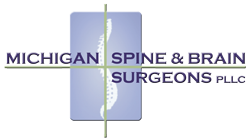Patient Education
Brain Conditions
- Acoustic Neuroma
- Alzheimer's Disease
- Astrocytomas
- Brain Aneurysm
- Brain Tumor (Overview)
- Cavernous Malformation of the Brain (Cavernous Angioma; Cavernoma)
- Cerebral Abscess (Brain Abscess)
- Cerebral Arteriovenous Malformation (AVM)
- Chiari Malformation
- Chronic Subdural Hematoma (Hemorrhage)
- Cluster Headaches
- Concussion
- Epilepsy
- Hydrocephalus
- Meningiomas
- Meningitis
- Metastatic Brain Tumors
- Migraine Headaches
- Myelopathy
- Normal Pressure Hydrocephalus (NPH)
- Occipital Neuralgia (Arnold's Neuralgia)
- Temporal Lobe Seizure
- Parkinson's Disease (PD)
- Pituitary Tumor
- Post-Whiplash Headache
- Pseudotumor Cerebri
- Stroke
- Subdural Hematoma (acute)
- Tension Headaches
- Traumatic Brain Injury (TBI)
- Trigeminal Neuralgia (TN)
- Vertigo
Cerebral Arteriovenous Malformation (AVM)
Overview
This condition is an abnormal connection between the arteries and veins in the brain. An AVM contains arteries that connect directly to veins without first narrowing down into much smaller blood vessels called capillaries. As a result, blood that is under high pressure is allowed to flow through thin-walled veins. This can interfere with normal blood circulation in the brain and can lead to a hemorrhage.
Causes
In most cases, the exact cause of an AVM is unknown. This type of malformation is believed to develop before birth during the early stages of embryonic development. It is not known to be caused by any medications or foods or by any activity undertaken by the mother during pregnancy.
Symptoms
Most people do not experience symptoms of AVM prior to a hemorrhage. But a small number of people do, and in some cases these symptoms can be debilitating. Symptoms of AVM may include headache, whooshing or pulsing sounds in the head, seizures, and muscle weakness. Symptoms may also include problems with memory, vision or coordination, abnormal sensations such as numbness or tingling, and hallucinations. Symptoms are usually noticed when a person is between the ages of 20 and 40.
Diagnosis
Occasionally an AVM is discovered because of a patient's symptoms, but in many cases an AVM is discovered because of a hemorrhage or because a CT or MRI scan was ordered for another reason.
Rupture
The major concern when a patient is diagnosed with an AVM is that it may rupture and result in a large amount of bleeding into the brain. This can cause a catastrophic stroke or cause harmful compression of the brain. This type of hemorrhage is life-threatening and requires immediate medical attention.
Treatment
Treatment options may include surgical removal, endovascular embolization (in which a catheter is used to block the problem vessel), and stereotactic radiosurgery, in which focused radiation beams are used to destroy the AVM. Sometimes these options are used alone or in combination to treat the AVM.
© 2010 Swarm Interactive, Inc.
